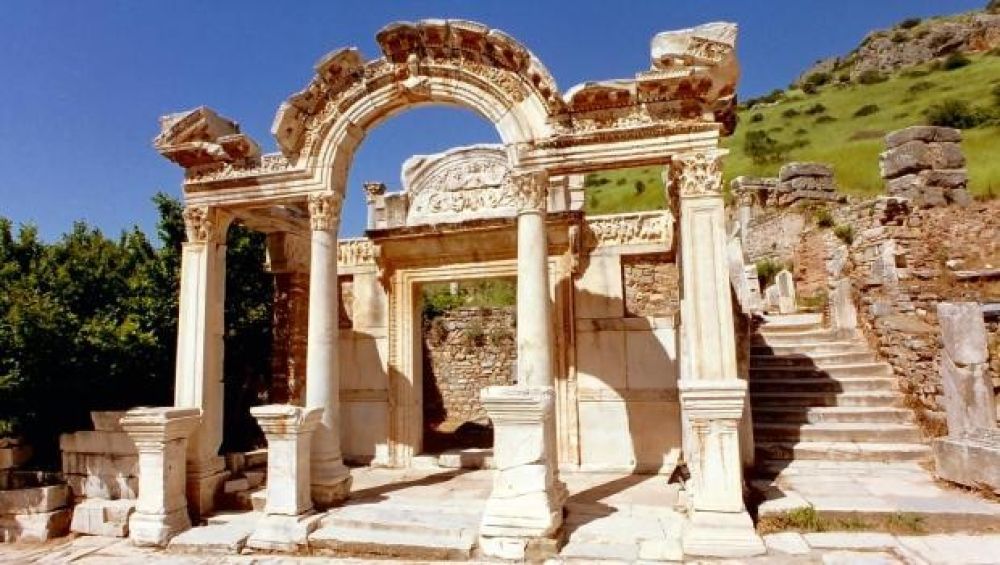Travel Guide: Temple of Hadrian, Ephesus, Turkey
The Temple of Hadrian is one of the most well-preserved monuments in the ancient city of Ephesus. Below you will find the necessary information to plan your visit.
Reaching Temple of Hadrian
The Temple of Hadrian is situated in Ephesus, near the modern town of Selçuk in the Izmir Province.
By Air
The nearest major airport is Izmir Adnan Menderes Airport (ADB). From the airport:
- Take a taxi or a rental car directly to Ephesus, which is around 60 km (37 miles).
- Use the shuttle services or the train to reach Selçuk first, and then a taxi or minibus to the site.
By Train
The Turkish State Railway (TCDD) operates trains from cities like Izmir, Denizli, and Aydin to Selçuk.
- Once at Selçuk station, Ephesus is just 3 km (1.8 miles) away.
- Ephesus can be reached by taxi, on foot, or by the minibuses that frequently run to the site.
By Bus
Intercity buses travel from various destinations within Turkey to Selçuk.
- Major companies include Pamukkale, Kamil Koç, and Metro Turizm.
- Upon arrival at Selçuk bus station, opt for a short minibus ride, taxi, or a pleasant walk to Ephesus.
By Car
If coming by car, follow the signs from Selçuk to the Ephesus ruins.
- Ephesus is about 18 km (11 miles) from Kusadasi, a popular cruise ship port and beach resort town.
- Parking is available at the entrance of the site.
Entry to Temple of Hadrian
The Temple of Hadrian is located within Ephesus and is accessible as part of the Ephesus tour. Make sure to buy an entry ticket to Ephesus at the main gate.
- Admission fee is applicable.
- Guided tours are highly recommended to enrich your historical understanding of the site.
Tips for Your Visit
- Wear comfortable shoes as the site involves a lot of walking.
- Visit early in the morning or late in the afternoon to avoid the crowds.
- Bring a hat, sunglasses, and sunscreen due to limited shade.
- Carry water to stay hydrated during your visit.
- The Temple of Hadrian is particularly stunning during the golden hours when the sun casts warm colors over the ancient stones.

